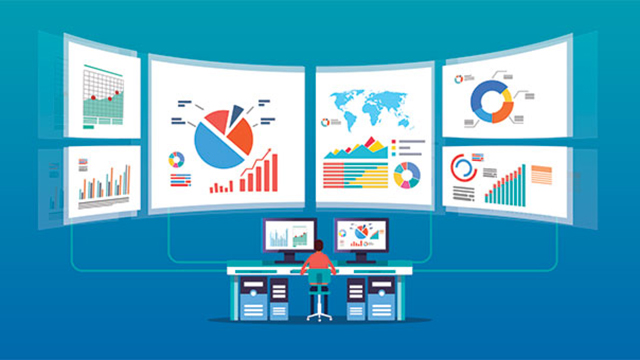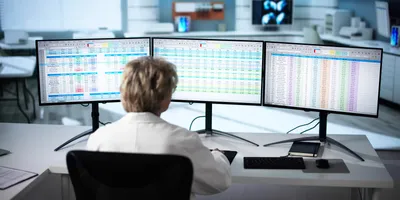 Credit: iStock
Credit: iStock
Part of running a laboratory is planning for the future. Data indicating how often a piece of equipment is used, its condition, and service history is highly valuable and helps guide future purchasing decisions. Asset management software compiles this information, and other data, to produce an up-to-date status report on laboratory assets. It is also a valuable tool to support compliance efforts, as maintenance notifications and archived service and calibration records simplify inspections.
Asset management software may be customized to meet the needs of different laboratories, but its overall function is to “allow the user to manage their assets by keeping track of location, condition of assets, serving as a repository for service records, keeping track of service or maintenances schedules, aiding in the disposition of the assets, and more,” explains Suzanne Martinez, vice president of operations and business development at Lab Asset Manager.
It “helps organizations gain a 360° view of the usage and throughput of their lab instrument assets so they can make more informed, data-driven decisions,” says Steve Morandi, portfolio director, Global Technology Services at PerkinElmer (Waltham, MA). Some software allows users to schedule time to use specific equipment, along with advanced capabilities, “like factoring in input (such as temperature and humidity) from other connected IoT devices, supporting mobile user interface interaction and input, and enabling machine learning/AI-driven decision making,” says Morandi.
According to Martinez, “laboratories of all sizes can benefit from implementing asset management software,” especially “organizations with a broad spectrum of instruments in their labs, which may also be geographically dispersed,” says Morandi. “These companies are typically looking to streamline processes by gaining a better understanding of what is happening across their enterprise labs.” Given the variety of benefits and features to choose from, it is important to select a software best suited to your laboratory’s needs. Martinez advises those comparing different products to look for “flexibility so that it can grow with the changing needs of the company. It is also important to have an efficient solution across departments and functions so the information gathered by all departments is accessible and transparent.” She adds that a challenge for life science companies is “finding a software that is specific for the workflow of the lab environment.”
Related Article: Asset Management
Morandi recommends starting by “identifying the critical factors of operation that you want to address with asset management software. Consideration should be given to the type of lab, (e.g. GxP, type of research/science being conducted, etc.) regional vs. global capture, size of the analytical instrument install base, variety of multi-vendor instrument providers and modalities, expected throughput and criticality of the specific lab workflow, importance of lab environmental data capture, data security/cyber resiliency, and a view of the service/outsourcing model, to name a few.”
After gaining a thorough understanding of the laboratory’s needs, it is valuable to consider what other features are useful, “things like mobile access, Software-as-a-Service (SaaS) options, ease of use, dashboard and visualization layer features, how scheduling optimization works, the ability for analytics leverage from AI and machine learning to drive recommendations, data integrity, and price/performance,” suggests Morandi. It may also be worthwhile to evaluate whether the software may be integrated with any other data systems, especially laboratory information management systems.
Despite its value for managing laboratory assets, there are challenges associated with implementation. “Some company challenges include not having an accurate and/or full list of inventory,” says Martinez. In addition to such logistical challenges, “user acceptance and tapping into the full benefits of the software can be challenging at first,” explains Morandi. “Some lab members may gravitate toward business as usual—preferring to continue to use familiar, traditional processes. Users may also only look to learn and stick to a few functions, where tapping into more capabilities could be beneficial.” Looking for a manufacturer that offers training and support in the early stages may help to navigate some of the logistical challenges as well as address apprehension.
Lab Management Certificate
The Lab Management certificate is more than training—it’s a professional advantage.
Gain critical skills and IACET-approved CEUs that make a measurable difference.
As for the cost of implementing asset management software, labs can expect to pay for “getting software set up for a company’s specific needs and then to get all the data entered in,” explains Martinez. Many options are offered as an SaaS model, where the investment will be determined by the specific configuration best suited to the lab. “As with any software or technology purchase, future investments will need to be made to provide optimized results over time,” says Morandi.
Asset management software may be a valuable addition to any laboratory that wants to gain a better understanding of instrument performance and lifecycle. This data may be used to guide purchasing decisions, improve productivity, support compliance efforts, and manage operations. When selecting asset management software, one size does not fit all. Begin the process with a thorough understanding of the laboratory’s needs to ensure the best fit.












